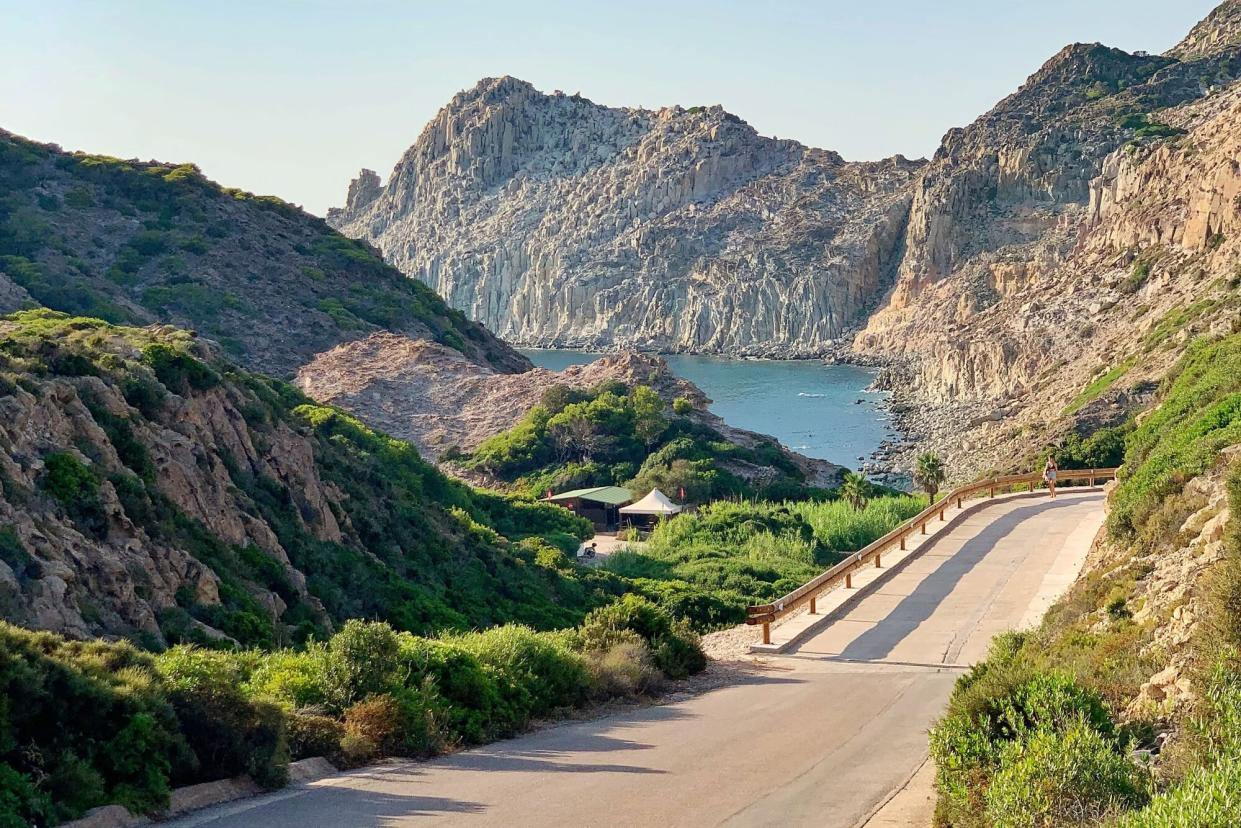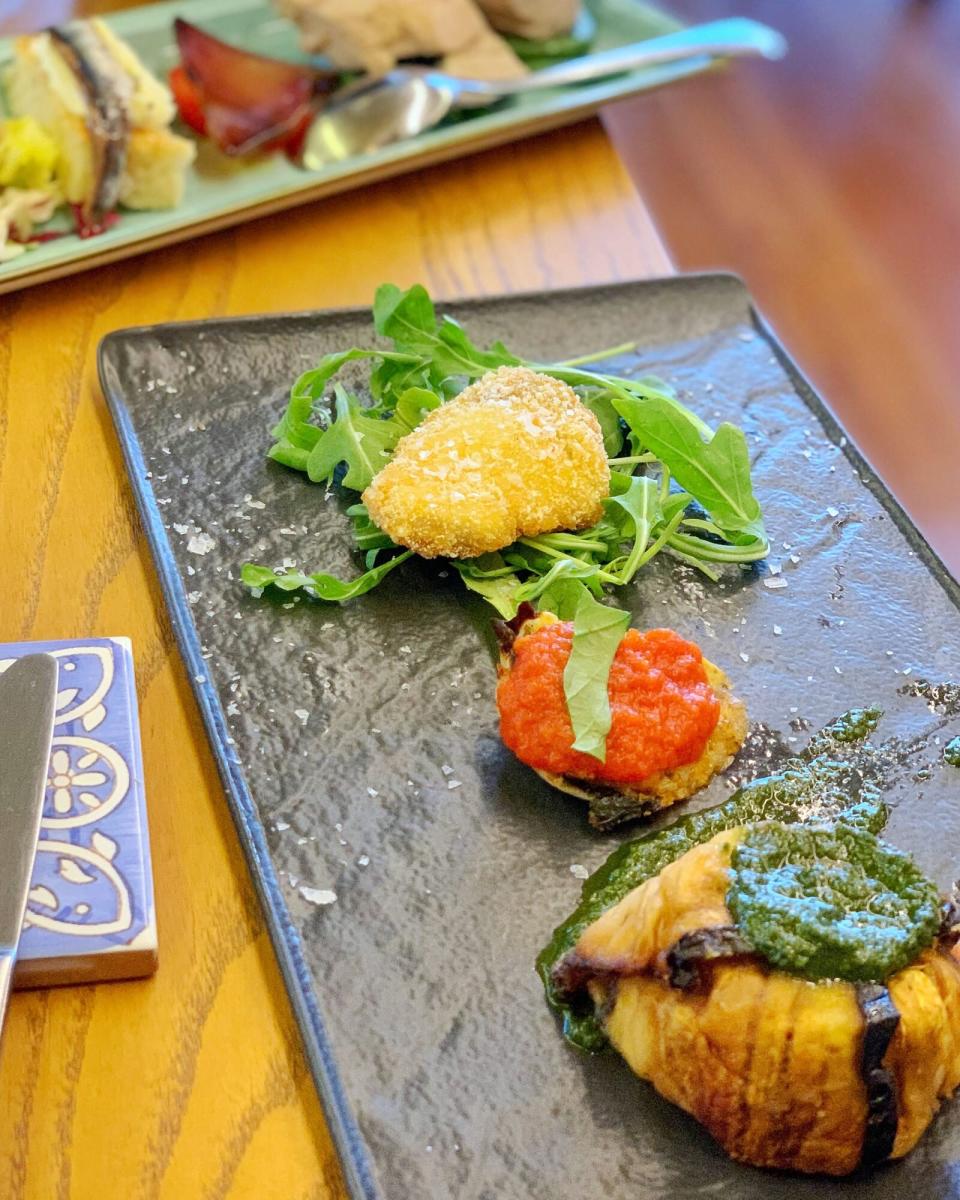This Under-the-Radar Italian Island Is Heaven for Food Lovers

Laura Itzkowitz
If you can't find the Isola di San Pietro on a map, you're not the only one. Even many Italians have never heard of this tiny island off the southwestern coast of Sardinia. Those who do know it, however, wax poetic about its beautiful beaches, its charming town called Carloforte, and its tuna.
When I mentioned to a couple of Italian colleagues that my husband and I were going to Carloforte this summer, they both exclaimed, "che meraviglia!" ("How marvelous!")
In Italy, every region has its culinary specialties — the dishes worth traveling for. In Carloforte, the specialty is tuna. It's on the menu at pretty much every restaurant on the island, prepared in more ways than you can imagine — raw, grilled, smoked, cured, with pasta, on pizza, as appetizers or mains. That's because Carloforte lies on the path that tunas take when they migrate through the Strait of Gibraltar and swim to the clear, crystalline waters of Sicily and Sardinia to spawn. They arrive in top shape and stay in these calm waters for about two months before leaving the Mediterranean. And they aren't the average yellowfin tunas that you typically buy canned at the supermarket; these are prized bluefin tunas.

Laura Itzkowitz
The tradition of tuna fishing in Carloforte dates back to 1738, when the town was established by Ligurian sailors sent to the Tunisian island of Tabarka who resettled on the Isola di San Pietro. These sailors brought some of their Ligurian traditions with them, which is why the buildings in town are painted pastel pinks, blues, and yellows. It's also why the focaccia you'll find on the island closely resembles the Ligurian version, and it's why pesto genovese appears in recipes like the lasagna with tuna and pesto at Da Andrea al Cavallera, one of the best restaurants in town. At the beach bar at Spiaggia La Bobba, you can even try a sandwich called "la tabarkina" made with tuna, pesto, mozzarella, and tomatoes on Ligurian-style focaccia.
We arrived in time for lunch and didn't waste any time. After a stroll through the town, we grabbed a table at Incudine Square and ordered a tasting of little focaccias topped with tuna. In advance of our trip, I made reservations at the most highly recommended restaurants in town: Da Andrea al Cavallera, Da Nicolo, and Pomata Bistrot, which is run by Nicolo's son. So that evening at Pomata Bistrot, we tried a caprese salad topped with smoked tuna. On the recommendation of our hotel's receptionist, we also booked a table at Al Tonno di Corsa.

Laura Itzkowitz
"The name seems bizarre, but in reality, every Carlofortino knows what it's about," explains the menu at Al Tonno di Corsa, one of just two restaurants in town recommended by the Michelin guide. "The Tonno di Corsa (running tuna) is the one captured in the months of May and June, with full respect to its seasonality. Not by coincidence the Tonno di Corsa is also the best quality bluefin tuna, precisely because it's fished in the period in which its flesh expresses its flavors the best."
There, we shared tuna braised in tomato sauce and I tried one of the few tuna-less dishes we ate on this trip: a traditional fava-and-vegetable soup served tepid and called La Bobba in honor of the beach. But of all the things we ate, my favorite was the linguine alla Nicolo, a simple dish of linguine with tuna, capers, olives, pecorino, and freshly grated lemon zest, which has been a staple of Da Nicolo's menu since 1973.

Laura Itzkowitz
Before we left the island, we made sure to stop by Pescheria Feola to buy some cans of tuna to bring home. Unlike normal canned tuna, the cans sold in fish markets and supermarkets in Carloforte are divided into different cuts that come from different parts of the fish and are used for different recipes. Buzzonaglia, packaged in blue cans, is the least prized cut. Darker than the rest, it comes from the parts that stick to the spine of a large tuna, and is typically used in pasta sauces. Ventresca is the most prized cut, the fatty part that comes from the abdominal area. Tarantello is cut from the lower abdomen and is softer than a filet but less fatty than the ventresca. Then there's bottarga, salted cured roe, which is a beloved local delicacy.
We decided to skip the bottarga, but the fishmonger offered us a discount: four cans of buzzonaglia for €20. At the fish market near our apartment in Rome, the same cans cost €13 each. So far, I've used one of the cans to try to replicate the linguine alla Nicolo. Maybe I'll try to replicate Da Andrea's lasagna next. For the rest, we'll just have to go back to Carloforte.

